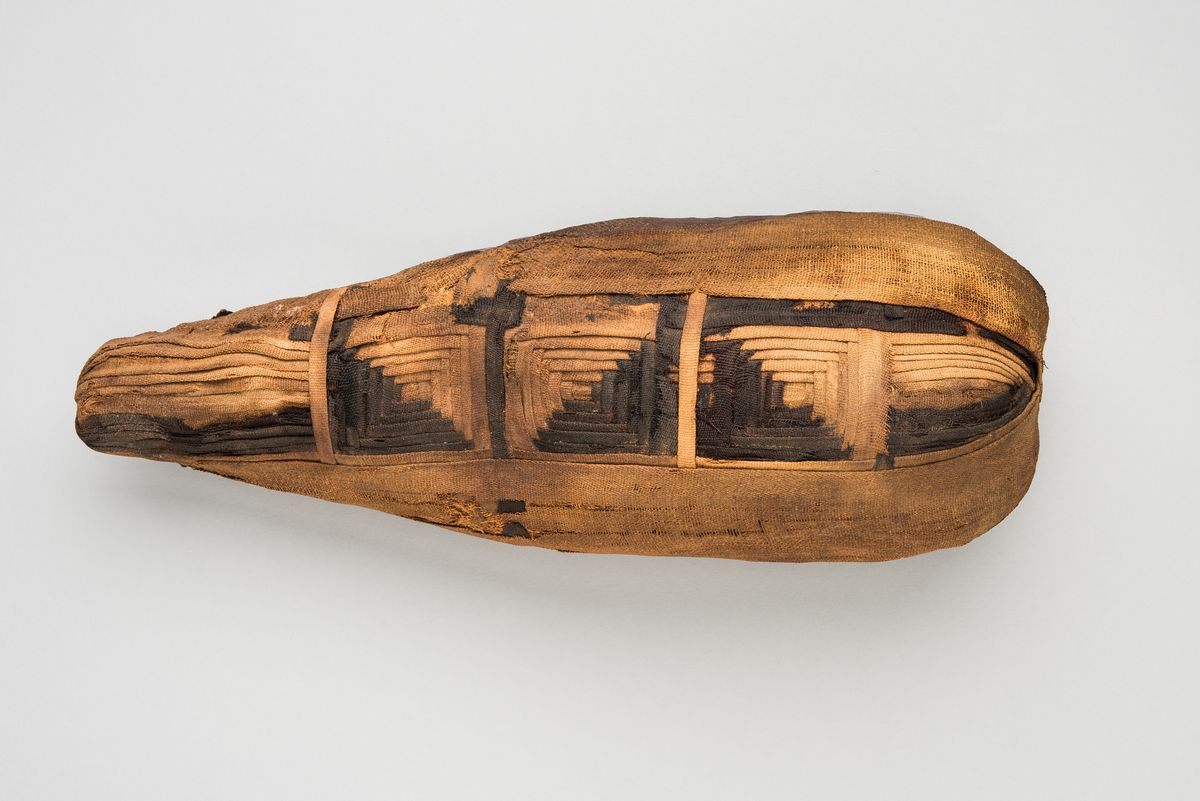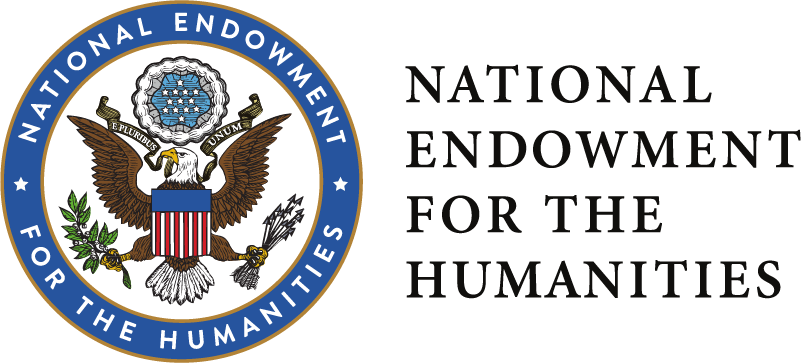
Ibis Mummy
Culture: Egyptian
Period: Late Period-Roman Period
Date: ca. 664 B.C.-A.D. 395
Place found:Egypt
Medium: Ibis remains and linen
Dimensions:
3 1/2 × 13 in. (8.9 × 33 cm)
Credit Line: Bequest of Gilbert M. Denman, Jr.
Object number: 2005.1.37
Provenance: excavated in the ibis cemetery at Abydos, 1914; sold by Egyptian Exploration Fund to Toledo Museum of Art, 1915 [former accession no. 15.52]; deaccessioned by Toledo Museum of Art, 1991; sold, Sotheby's, New York, June 12, 1993, lot 307, to Gilbert M. Denman, Jr. (1921-2004), San Antonio; by bequest to San Antonio Museum of Art, 2005
Exhibition History: "Egyptian Animal Mummies: Science Explores an Ancient Religion," San Antonio Museum of Art, March 23-July 1, 2018.
Published References
Sotheby's, New York, June 12, 1993, lot 307
S. M. Schellinger and J. Powers, "Sacred Beasts: Conserving the Animal Mummies in the San Antonio Museum of Art," Scribe: The Magazine of the American Research Center in Egypt (Fall 2020) 16-25.
S. M. Schellinger, “Scientific Analysis of Animal Mummies at the San Antonio Museum of Art,” in Proceedings of the First International Conference on the Science of Ancient Egyptian Materials and Technologies (SAEMT), eds. B. Gehad and A. Quiles (Institut Français d’Archéologie Orientale, 2022), 197-210.
Label Text
This mummified ibis is one of millions of animal mummies that were dedicated at Egyptian temples from the first millennium B.C. through the fourth century A.D. The Egyptians believed that these votive offerings would convey their prayers to the gods in perpetuity. Ibis mummies were dedicated to Thoth, the god of wisdom and literacy, who was often represented with the head of an ibis. This mummy was buried in a large ibis cemetery at Abydos that was excavated under the auspices of the Egypt Exploration Fund between 1912 and 1914. The decorative pattern of its wrappings, formed with contrasting strips of dyed and undyed linen, is typical of ibis mummies from this site.
In 2017 the Museum partnered with the Department of Radiology at UT Health San Antonio and the staff of the San Antonio Zoo to study the animal mummies in the collection. Non-invasive imaging, including X-ray images and CT scans, revealed the contents of each mummy without damaging its fragile wrappings. This mummy’s X-ray shows the position of the well-preserved ibis remains: the bird’s long, curved beak fills the narrow end of the bundle, the skull is between the wing bones, and the bent legs form the bundle’s wide end.
(Jessica Powers, 2019)
In 2017 the Museum partnered with the Department of Radiology at UT Health San Antonio and the staff of the San Antonio Zoo to study the animal mummies in the collection. Non-invasive imaging, including X-ray images and CT scans, revealed the contents of each mummy without damaging its fragile wrappings. This mummy’s X-ray shows the position of the well-preserved ibis remains: the bird’s long, curved beak fills the narrow end of the bundle, the skull is between the wing bones, and the bent legs form the bundle’s wide end.
(Jessica Powers, 2019)
Not on view
In Collection(s)
The San Antonio Museum of Art is in the process of digitizing its permanent collection. This electronic record was created from historic documentation that does not necessarily reflect SAMA's complete or current knowledge about the object. Review and updating of such records is ongoing.

 This resource has been made possible in part by the National Endowment for the Humanities: Exploring the Human Endeavor.
This resource has been made possible in part by the National Endowment for the Humanities: Exploring the Human Endeavor.
